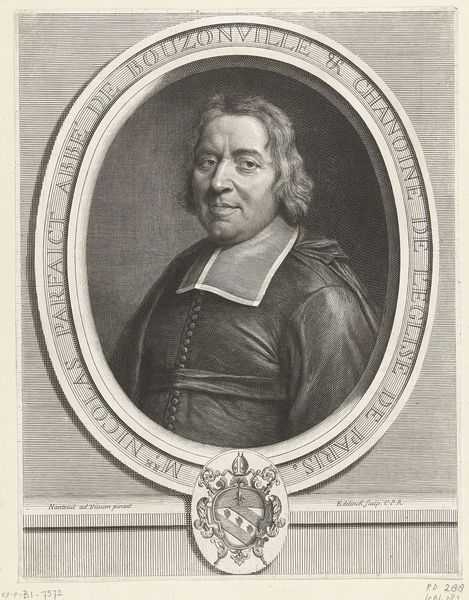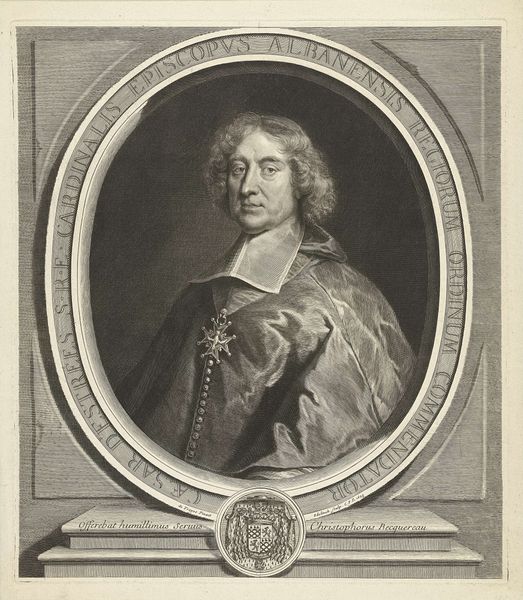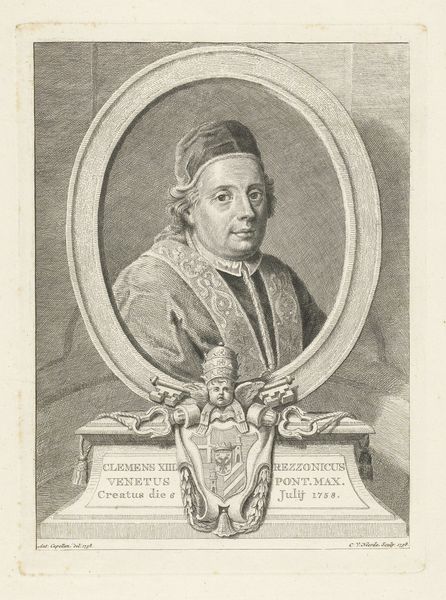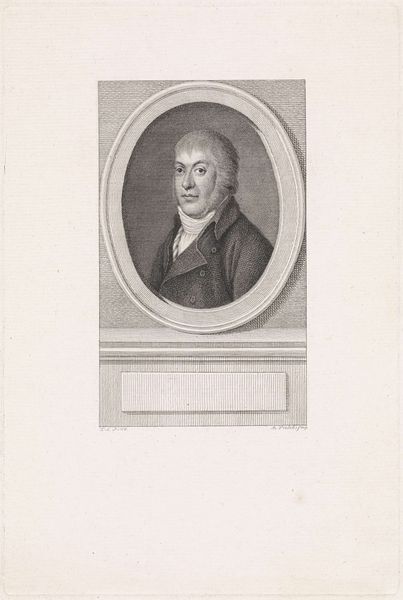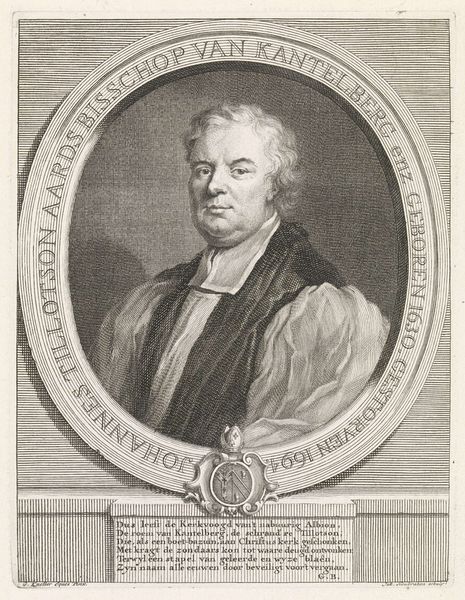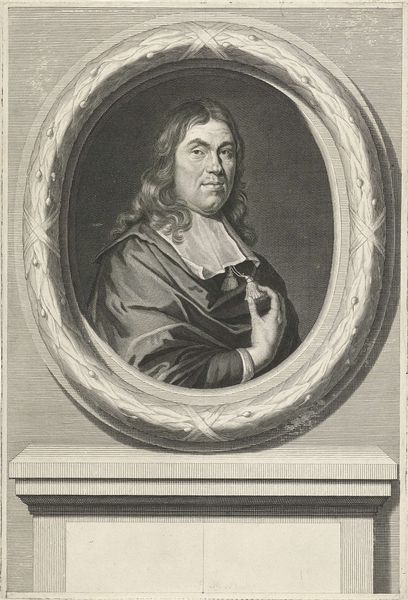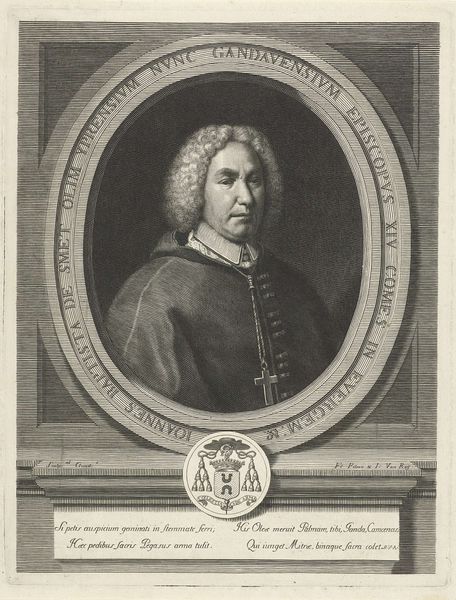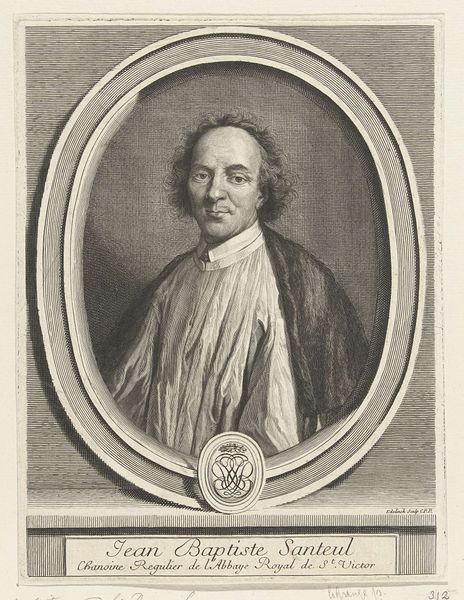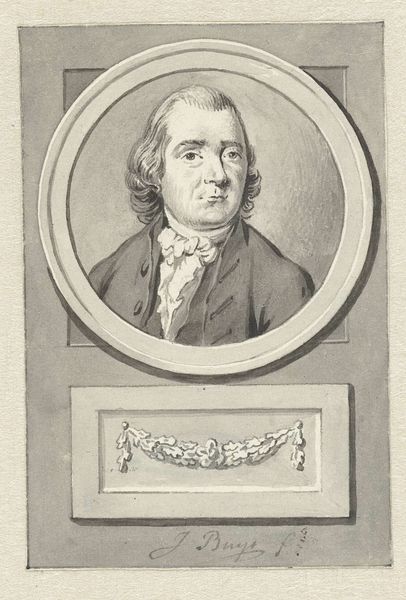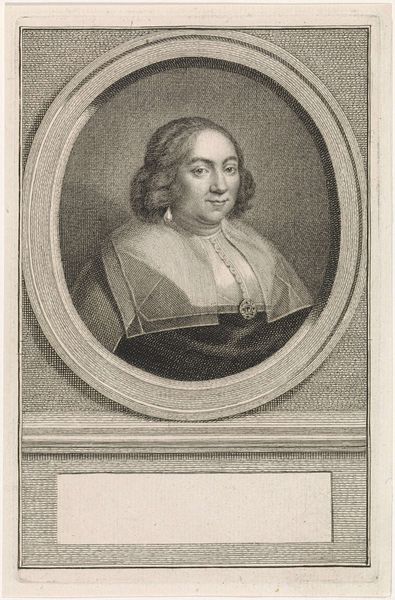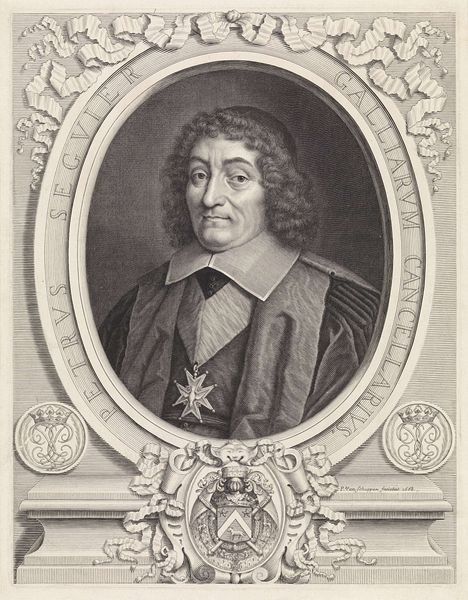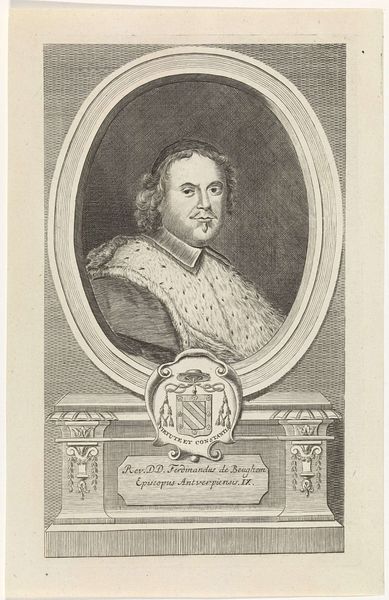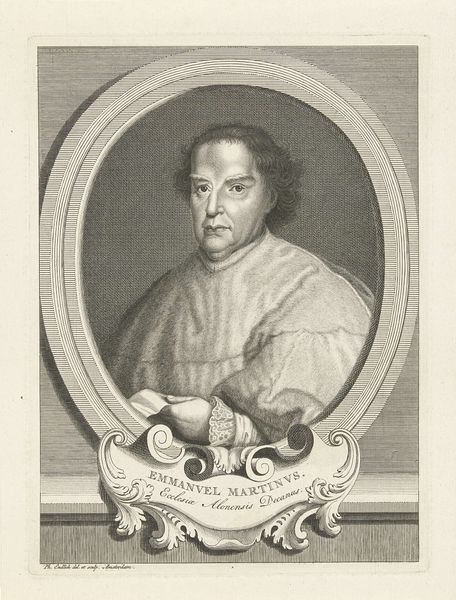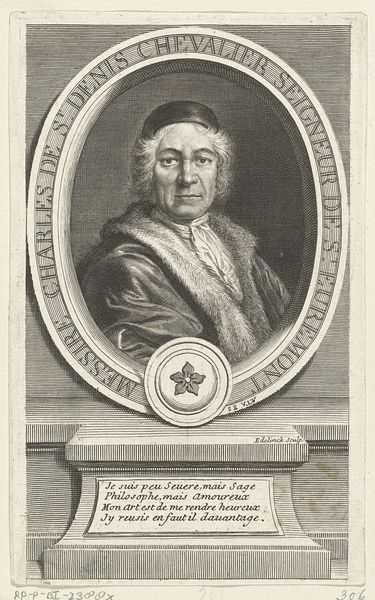
print, metal, engraving
#
portrait
#
baroque
# print
#
metal
#
old engraving style
#
engraving
Dimensions: height 360 mm, width 260 mm
Copyright: Rijks Museum: Open Domain
Curator: Let's talk about Gérard Edelinck’s "Portret van Nicolas de Blampignon" from 1702, a Baroque engraving currently housed at the Rijksmuseum. Editor: My immediate impression is one of studied formality; the subject's direct gaze and sumptuous fur collar convey power. It almost seems austere despite the obviously luxurious materials portrayed. Curator: Indeed. As an engraving, its materiality is interesting. We see a complex layering of lines etched onto the metal plate – probably copper – and then transferred to paper. Consider the labor involved: the skilled hand, the repetitive action. It blurs the line between reproducible image and handcrafted object. Editor: And beyond the immediate physical processes, look at the symbols employed to project Blampignon’s persona: the clerical garb denoting spiritual authority and, crucially, his family’s coat-of-arms placed right below the portrait—an unequivocal display of lineage. He looks directly out, almost asserting the visual language of legacy and intellectual command that Baroque art so loved to use. Curator: The engraved text also becomes part of the piece’s material presence— the artist is literally imprinting Nicolas de Blampignon’s status within the very fabric of the engraving. And also think about how many impressions were pulled, each slightly unique but materially identical and consider the economics of printmaking during that era. Editor: Quite. I can’t ignore that gaze—the slight upward tilt of his face, conveying a serene confidence. The fur, practically spilling out of the oval frame, symbolizes worldly success and also status… things that are deeply interwoven with what a pastor can embody, that is, not just devotion, but influence and patronage as well. The man understands how image perpetuates authority and the Baroque idiom amplifies it through very strategic symbolism. Curator: Ultimately, Edelinck offers not just a picture but also encodes a whole socio-economic framework within his marks. The image’s value is produced from both the copper mines and his status. Editor: And perhaps our dialogue reveals, conversely, how enduring symbols become anchored to social status over time, perpetually reinforcing perceived cultural hierarchies— food for thought!
Comments
No comments
Be the first to comment and join the conversation on the ultimate creative platform.
